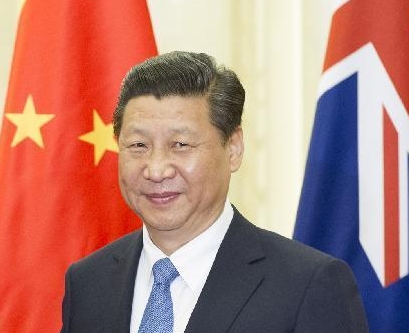
Chinese President Xi Jinping.
Australian exporters are set to benefit from an historic trade agreement signed between Australia and its largest trading partner, China. This deal, which took nine years of negotiation, represents a victory for bi-lateral trade and an expansion of the economic relationship beyond mineral and resources, which have dominated the relationship over the last decade.
The biggest wins are arguably in agriculture, services and investment, and it is fair to say that this agreement goes far beyond any other agreement China has signed to date.
It is a ground-breaking deal for Australian services companies, including legal and other advisory firms, health and ageing, education and financial services companies. Streamlined licensing, a reduction in restrictions, and advances in the mutual recognition of qualifications are a few of the key benefits resulting from the agreement. This is significant as services often miss out on FTA.
Major benefits secured in the agriculture sector particularly for dairy, beef, lamb, wine and other horticultural products are to be phased in over time.
Some of the highlights are:
Australian dairy farmers are to be provided with tariff-free access within four years to China’s infant formula market, without the ‘safeguard’ caps currently applying to NZ competition. Winemakers currently facing tariffs between 14 and 30% will have tariffs eliminated over four years. Tariffs on horticultural products, seafood and other goods representing 93% of Australian exports by value will be reduced to zero by 2019. Recent ‘surprise’ tariffs on Australian coal will be removed over two years. Australia has agreed on a new case by case mechanism for Chinese investors to seek to bring in workers at Australian wage rates in areas with skills shortages. Private Chinese investors will have most foreign investment review thresholds (except in sensitive areas) increased to $1B in line with the KAFTA and JAEPA although SOE investment will still remain subject to immediate FIRB review. A number of remaining issues such as access for Australian sugar will be reviewed in three years. Services access is significant, with aged care providers being able to operate directly in China (ahead of Japan, US and European providers), tourism and hospitality firms being allowed to open hotels, law firms permitted to service clients from the Shanghai Free Trade Zone, with other benefits to universities and financial services companies.
The provisions relating to trade facilitation and customs procedures are also welcome and fit within the APEC and G20 initiatives around trade facilitation, and are consistent with our government’s deregulation agenda and in the 2014-2015 Trade Policy Recommendations recently released by the ECA.
The agreement was never likely to deliver immediate comprehensive improvements in trade to all parties that addressed all of their needs and aims. This agreement, like others, ultimately represents a compromise as to what is achieved now, what will be implemented over time, and what will be the subject of further negotiations. It also sets an important foundation for further development. The general principle is that after nine years, the government would have assessed that this is the best deal that can be done now and that delaying the deal further would not have necessarily delivered better outcomes and may, indeed, have not delivered any outcome as other negotiations took priority.
This deal embeds Australia’s position as an important trade partner of China and means that exporters can now take on key competitors such as New Zealand, that have been enjoying preferential access due to their existing FTA. Importantly, consumers, retailers and importers will benefit from the tariff reductions and other improvements in the agreement. That includes Australian industry, which uses components for manufacture from China for export.
The agreement also represents a message to the rest of the world on China’s economic reforms, especially in the services sector.
The actual wording on the agreement has yet to be revealed but on top of the implementation of the KAFTA and JAEPA for Australia, the recent announcements on a US/China deal on emissions controls, the breakthrough between the US and India which should allow the WTO Trade Facilitation Agreement to be revived and implemented and the solid initiatives announced at the G20 on trade and infrastructure investment, the Australian and international trade agenda looks much healthier than for some time.





